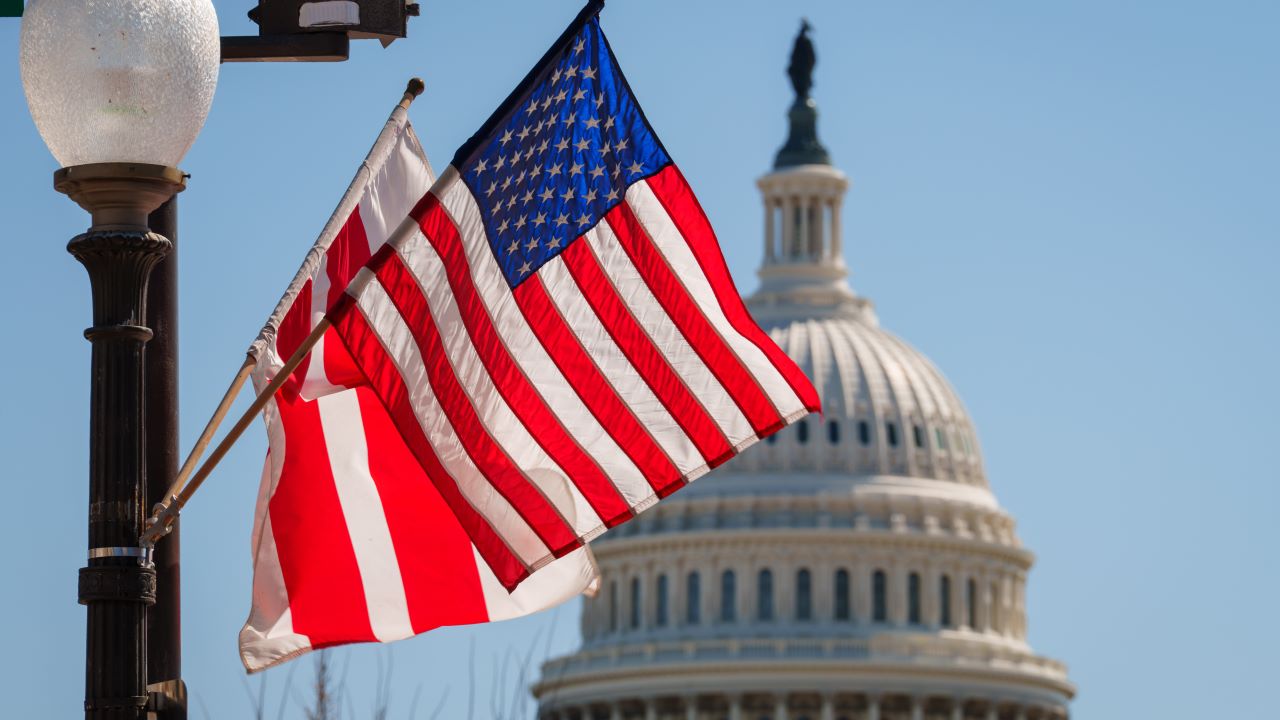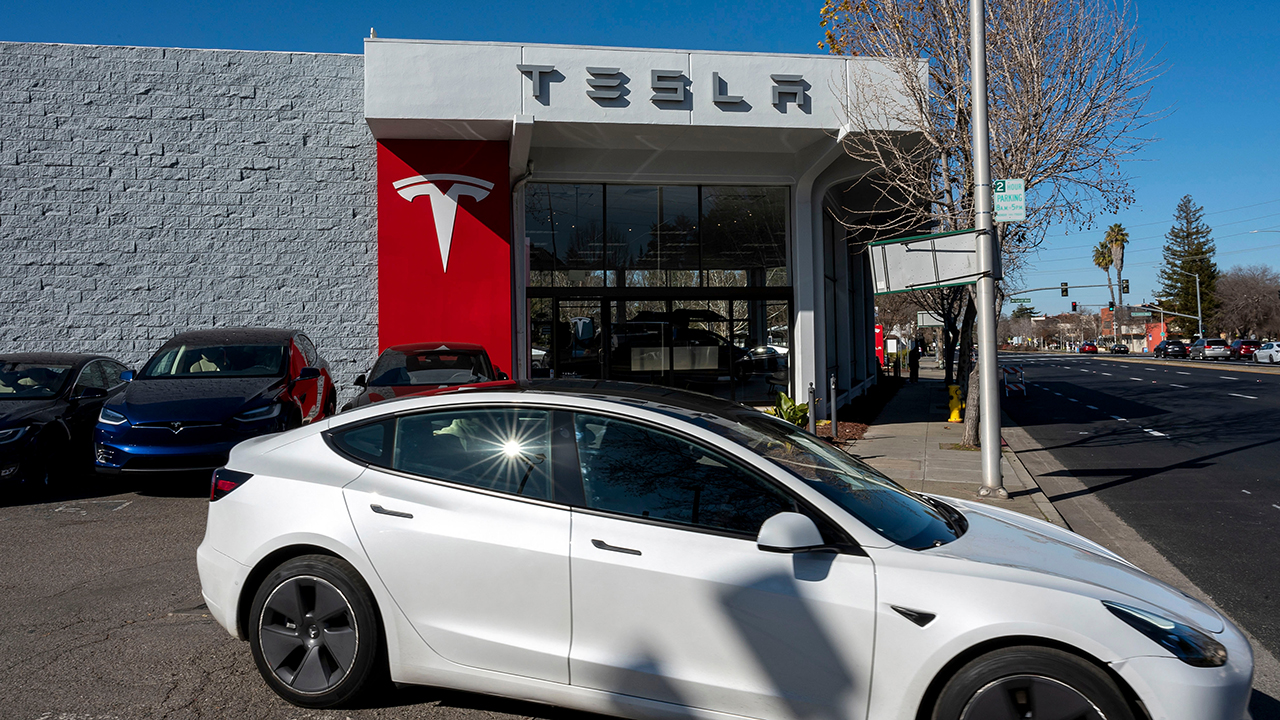Larger tax-cut proposal not enough to offset drag on growth from tariffs: Goldman Sachs

A new report by Goldman Sachs finds that while House Republicans' tax cut package that's moving through the reconciliation process cuts taxes by more than previously thought, it's still not enough to offset the drag on economic growth created by tariffs.
Goldman Sachs economists led by Jan Hatzius noted in the report published Monday that the proposed tax cuts are larger than anticipated, by about 0.1% to 0.2% of gross domestic product (GDP) over the next few years.
The report said some of the provisions related to tax cuts from 2017 that are due to expire at the end of this year, unless extended, are slightly more generous than expected, while the net business tax cut is slightly smaller with reinstated incentives for investment and expending offset by fewer subsidies for green programs.
"The net individual income tax deductions and business investment incentives in the fiscal package pending in the House should have a positive impact on growth in 2026 and 2027," they wrote. "However, just as the revenue gains from tariff increases will more than offset the net increase in the deficit (compared with the current level) from the House fiscal package, the hit to growth from tariffs will more than offset the boost to growth from the fiscal package."
MOODY'S DOWNGRADED US CREDIT RATING: WHAT DOES THAT MEAN?
Tariffs also factor into the overall fiscal outlook in relation to the tax-cut package through the generation of revenue, though tariff revenue isn't included in the estimate of the bill that will be produced by the Congressional Budget Office. Tariffs are taxes on imports that are paid by importers, who economists note often pass higher costs on to consumers via higher prices.
The analysis found that while the tax-cut package would increase budget deficits by about 0.4% of GDP compared to current policy in the next few years, tariff revenue would likely exceed that difference.
"Goods imports in 2024 totaled roughly 11% of GDP. Assuming that goods imports decline roughly proportionately to the 13 [percentage point] rise in tariffs we assume, tariffs should raise around 1.25% of GDP, or around $400bn in FY2026," the economists wrote.
However, they noted that the "overall increase in federal revenues would be somewhat smaller, as we have lowered expectations for other revenues slightly as a result of the hit to growth from tariffs."
CBO SAYS US BUDGET DEFICITS TO WIDEN, NATIONAL DEBT TO SURGE TO 156% OF GDP
Persistent budget deficits have caused the gross national debt to surge above $36 trillion and have prompted the three major credit rating agencies to downgrade the U.S. from their top tier over the last 15 years, with political dysfunction around the debt limit and curbing spending contributing to the moves.
S&P lowered the U.S. credit rating from AAA to AA+ in 2011 amid a debt-limit impasse, while Fitch Ratings issued a downgrade on the same scale in August 2023, citing an "erosion of governance" around managing the debt. Moody's on Friday issued its own downgrade, cutting the U.S. rating from the top-notch of Aaa down a rung to Aa1 due to deficit projections.
MOODY'S DOWNGRADES US CREDIT RATING OVER RISING DEBT
The Goldman Sachs report also said Moody's move "appears to have been influenced by the pending fiscal package."
"While we do not believe the downgrade would force any holders of Treasury securities to sell, it highlights the deteriorating fiscal outlook and comes at a time when markets are already attuned to fiscal risks," Goldman wrote. "That said, Moody's projected 9% of GDP deficit in 2035 is roughly 2pp larger than our own."
The budget deficit as a percentage of GDP is a popular metric for comparing the fiscal to the size of the economy. Last year, in the federal government's fiscal 2024, the deficit was 6.4% of GDP, up from 6.1% in fiscal 2023 and 5.3% in fiscal 2022.
GET FOX BUSINESS ON THE GO BY CLICKING HERE
The pandemic era peak was 14.7% in fiscal 2020 amid a surge of relief measures, while the all-time record is 26.9% in 1943 as World War II raged.
What's Your Reaction?
 Like
0
Like
0
 Dislike
0
Dislike
0
 Love
0
Love
0
 Funny
0
Funny
0
 Angry
0
Angry
0
 Sad
0
Sad
0
 Wow
0
Wow
0


















































.png?Expires=1838763821&Key-Pair-Id=K2ZIVPTIP2VGHC&Signature=IO0~CT3pU-TcxGc~yoZSmoQx23MZVuK-~4jSii~NKEblRmyO3el7NXPu~Rh1o23voASg7hlcHLw4kvQuDK1jssEhcjoNBBvEpZ~GGOAU6yosBhpHpeF179F~h7i6VxmsBNh9gtTutkoqY73O2YCFey~IAqSzKbBqETP1kP9cAg1916Z1YkJJs-5MliMrkZ5d7-mWGLbpHp2wGj2VlMph8XzYlL4~y1O7fB~JdIS~Rs4RMRs2x0WT1qUIpHAsf3GdwtOyAmKFSpIg8xCyNGZZ5h~13nXlmpd7uPvW8tBfttpG9pFTqcway-uch5WyfHOEfi7UlJCOWrr6fCYY5PMgSg__)







